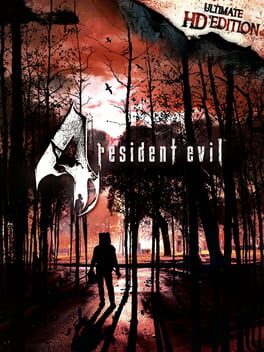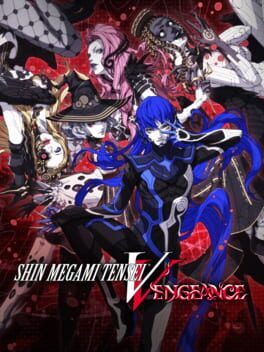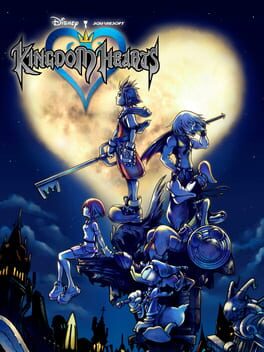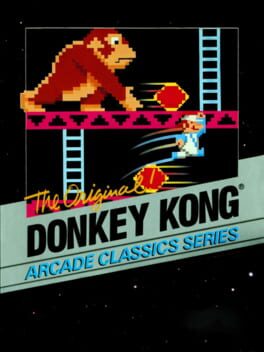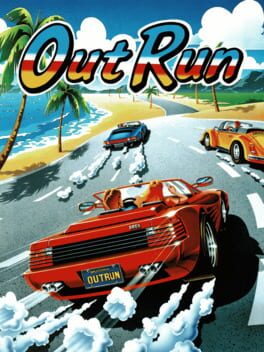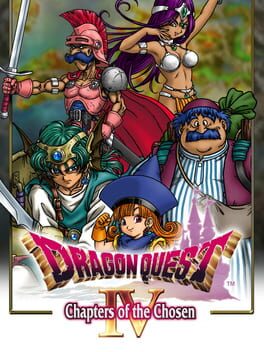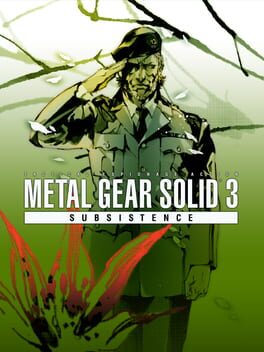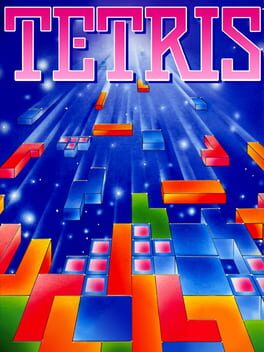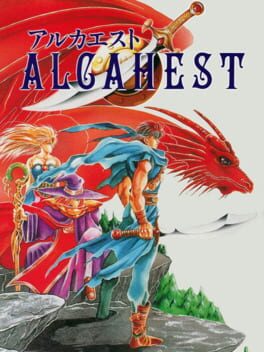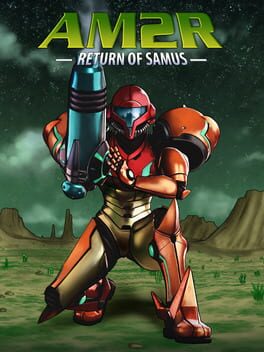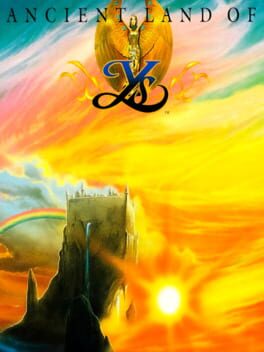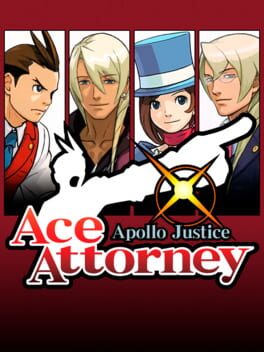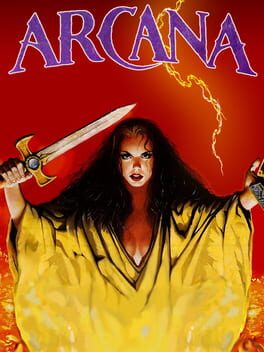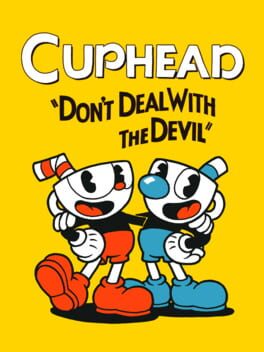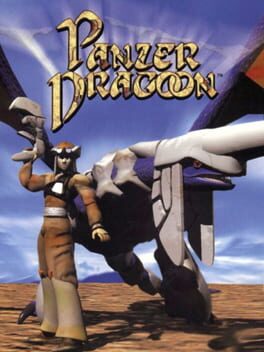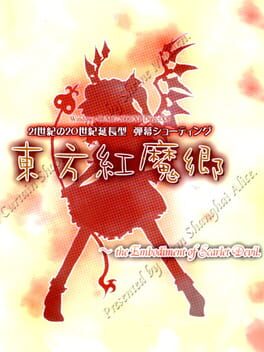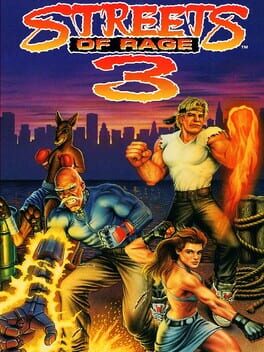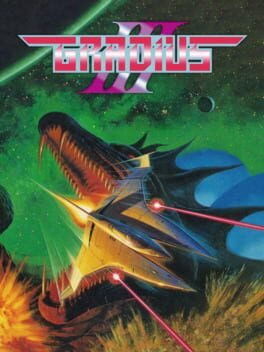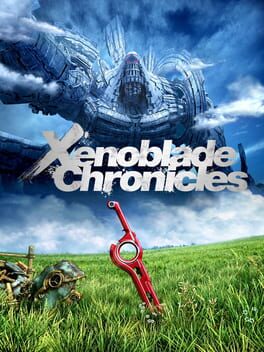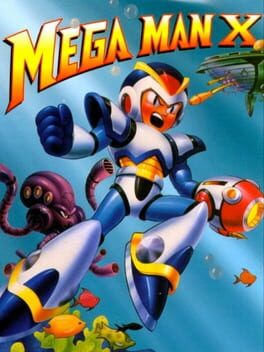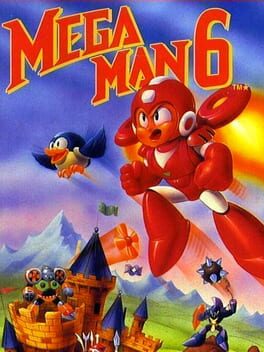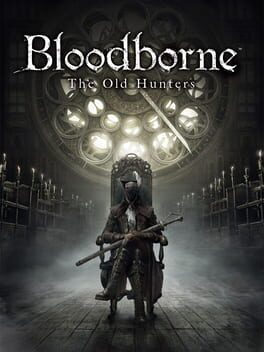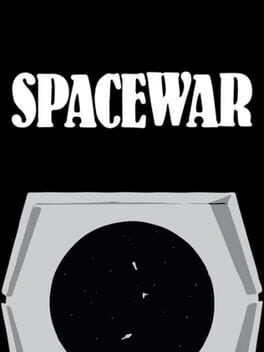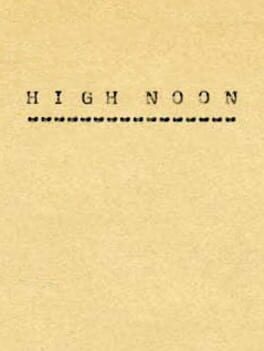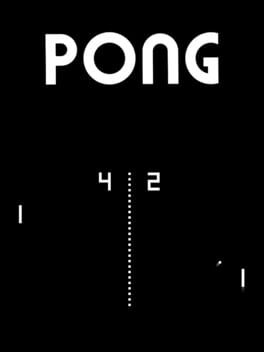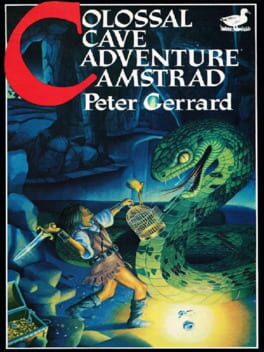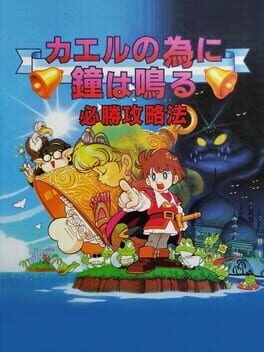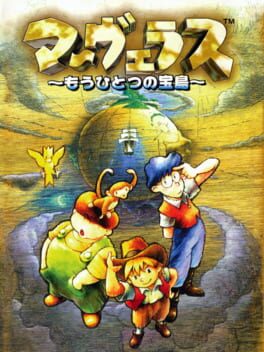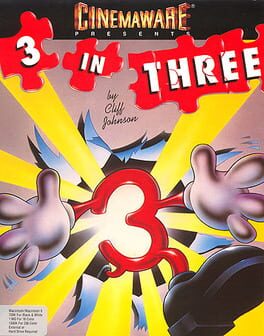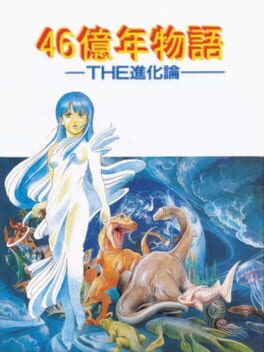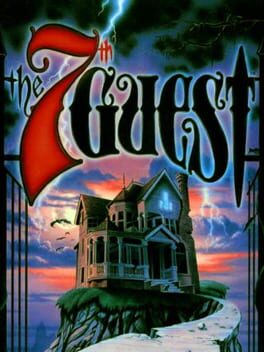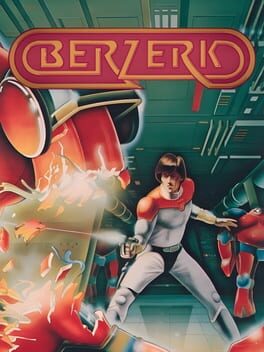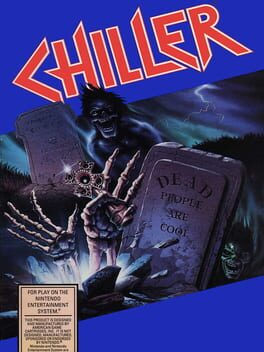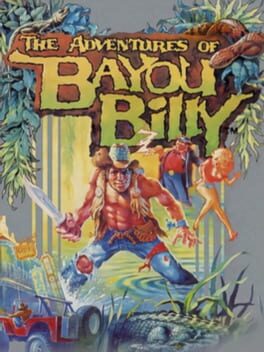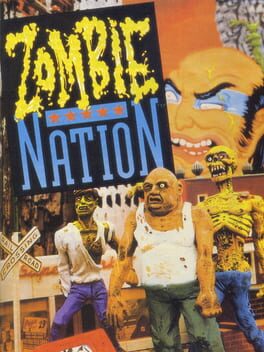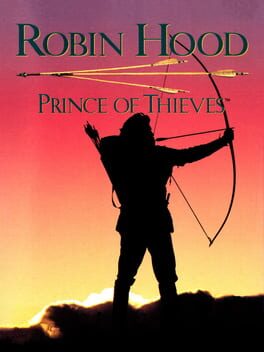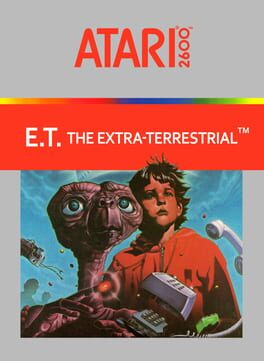jamz92
31 reviews liked by jamz92
I'M NOT GONNA SUGARCOAT IT
231 STRENGTH + HIGH ALMIGHTY PLEROMA + CRITICAL ZEALOT + CRITICAL AURA + MURAKUMO(+9)
Yes, this is a full-priced rerelease with no upgrade options from the original. But that's just ATLUS. They've been doing this shit for ages, and if I'm being honest this is probably the most substantial of the rereleases they've done, besides possibly Devil Survivor 2: Record Breaker or Strange Journey Redux. I have yet to play those, but I have played every numbered SMT title, from I to VV. I'm not here from Persona, I'm here from SMTV. Because of that, I went in expecting the story to be improved from the original, but still not perfect. I was right to expect that. I ignored the plot in the original, and here I didn't ignore it. Actually, I found it okay this time. I won't spoil the ending, but like Apocalypse, this game features two main endings. No neutral this time, but they REALLY wanted to shoehorn in the original route, and that has a true neutral ending, so I guess that was what they were aiming for. The law ending seems a lot better than chaos, and it's the one I went for. Don't expect the most cohesive story ever, but it does some cool things. See that giant demon causing havoc? Okay, go kick its ass now. Cars have caused the deaths of millions of people? Don't care, where's Tao. The world is impossible to salvage and the system of death and rebirth is cruel? I can fix it. They seem to have given some characters a lot more attention, mainly Tao and Yuzuru. I understand people being bummed out about Miyazu still not doing anything substantial, but she was a neutral rep in a story with specifically law and chaos endings, and we already have a character (or two) that grows a backbone because of the shit they get thrown into. Where Yoko is Naoya, Miyazu is Yuzu, for those familiar with Devil Survivor. For those who aren't, Naoya is a freak who just wants to spite God and does several things for that sole reason and Yuzu simply wants to run away and not have to deal with the conflict. Now, Sahori? That one is a bit more debatable. She didn't get much screentime in the original, and with the VENGEANCE title I really expected her to have some more impact, but she doesn't. At least what she does get is better than what she got in Creation.
Okay, story aside now. I quite enjoy the gameplay here. The Press Turn system is really enjoyable, and it was for the original too. Here, there's more Magatsuhi skills, but I only ended up using about three: Critical, the one Konohana Sakuya has, and the one that lets you repeat a move four times. Admittedly, with all the incense items they give you, the seemingly boosted rate of Mitamas and Demon Haunts, the game is a lot easier. The significant nerfing of the level scaling also helps to lessen the difficulty. Do I mind, though? Not really. I beat Dagda around level 68 I think, and he's a level 80 demon. Stuff like that is really fun, and this game does have a few "FUCK YOU" fights, like the final Qadistu battle and some of the battles in the endgame. They've also added two new superbosses, except apparently you can also fight a buffed version of the true final boss, who to many was originally a pushover after beating the superboss necessary for the true neutral ending. I have defeated that one, and also Masakado. I wouldn't want to spoil that, but he's a bit random to get to so you'd almost have to know about him beforehand. To get him, have Yoshitsune. You already should because he's a great demon. If you're in the Canon of Creation specifically, he should give you a quest in the Demon Haunt once you hit Chiyoda, which is not an area in Vengeance. Instead, Vengeance has Shinjuku, and the old demon castle is replaced with Shakan. I consider these upgrades, but Shakan is still kind of lame. Sure as hell beats the janky wind puzzles though.
Forgot to mention the music originally. The original songs were great, and the new ones are even greater. I love the style they have. Here's the Qadistu theme which I think is really good. Even the opening song is good.
They've added about 50 new demons. Are they useful? Some of them, yeah. Originally, the best buffer was Idun, or maybe Demeter. With the flagship broken ATLUS DLC you get Konohana Sakuya who is pretty much the best now. If you don't have her, without spoiling too much there's a story character who you can now bring into NG+ and they're a pretty good healer too. Danu requires a neutral clear, but she is really good against the true neutral superboss. Basically the DLC is good, no shit. There's another, too, and it's motherfucking Dagda. He may not seem too crazy, but his signature move does thousands of raw damage (no critical) on top of having a 60% chance to instantly kill an enemy. With his innate skill everyone gains a 20% chance to instakill or set an enemy to sleep. The sleep seems to work on bosses, but obviously not the death touch. He also completely nullifies four elements and is only weak to one. I simply made him nullify all of them because it's funny. It's not hard to do that either, because of the base game's addition of essences. While we're at it, god bless the reverse compendium fusion. Anyway, back to demons, Nahobeeho ended up being reliable, too. With the build I have for him, he usually hits about 6-7 critical hits of the 10 he does in his signature attack. Because it's ice, many things will be weak to it, unlike Yoshitsune's physical. You get him at level 65 I think, and you can definitely take him to 99. There's a new unlock after true neutral that might be strong too (won't spoil that), and Masakado is strong as shit against multiple enemies. Matador also got a significant buff where any enemy weak against his attacks can just instantly die, probably very useful for the point you get him. If you fight Demi-fiend and succeed, you can now recruit him, and while I haven't done that yet, I figure he'll be seriously strong. I think it's better that the new demons mostly blend in with the others, so it doesn't introduce too much power creep.
Okay, but what about the optimal build? Well, back then it'd be pure WORLD OF STRENGTH, but this release introduces an item that allows you to re-allocate your stats. I chose to start the game with magic, and then change to strength around level 60. Anyone who's beaten the original game knows why, but for those new, there's a skill called Murakumo and it's really really strong. Before that, strength isn't that good. Aramasa is a flashy skill but it feels like I'm slashing enemies with a pool noodle and you only occasionally get a critical hit with it. Critical hits and super-effective hits are important because of the Press Turn system rewarding those with an extra move. It's a big reason why Yoshitsune is such a good demon to have the instant you can obtain him.
New to this release is also the Godborn mode. I haven't done it yet, but if you like grinding and big numbers like I do (I got done with Disgaea 4 not long ago), it probably sounds like an interesting time. To unlock that, you have to beat a particular superboss who's really hard and WILL kick your ass. People have mentioned you need to beat true neutral in Creation first, but TIP: you actually don't, I guess. If you saved your Vengeance clear file separately from your pre-ending save, you can reload to the latter and the quest to battle him will be available, although I don't think you're supposed to fight him before six NG+ runs because he is fucking stupid. Hit him with safety mode if you have to, then you should have the option to do a Godborn run. This is not a difficulty, as it's actually a mode for NG+ like Newborn and Reborn, just everything is jacked up to crazy stats and the level cap becomes 150, and everything is that level. Doesn't sound very balanced, but cheesing it could be a blast, I'll have to see when I get to it.
I really enjoyed this one, and I'm not even done with it. Obviously, doing a review now would be the best, since it's still in season and all that, which is kind of why I chose not to wait too long. I definitely don't intend to be done with this game yet, because my love for SMT insists that I exhaust everything and go for the real 100% - the mastery.
Side note, I'm proud of how this game's been doing. 500k in three days is crazy for this series, and while many doubted it, I knew it would be a hit with a multi-platform release. A lot of people already know the Shin Megami Tensei name through whatever means (usually Persona), so push them to it through advertising, unchain the game from 2015 mobile phone hardware, and watch it roll. It was a smart move for ATLUS to throw Nocturne on sale for $8 because many who buy this game will likely give that a play too if they simply already own it. If I'm to recommend any game first, it would very likely be this one. As much as I like Nocturne, it's more annoying-hard than fun-hard. The HD remaster also needs a few mods to really be the best port it can be. Those do exist and they're fairly easy to install, and with SMTVV there's less of that... but it does still exist. Look to here and here.
How did I beat it this early? Don't ask. Just know that MURDEROUS GLEE + CRITICAL ZEALOT + HIGH ICE PLEROMA + IMPALER'S ANIMUS + JACK TEMPEST(+9)
231 STRENGTH + HIGH ALMIGHTY PLEROMA + CRITICAL ZEALOT + CRITICAL AURA + MURAKUMO(+9)
Yes, this is a full-priced rerelease with no upgrade options from the original. But that's just ATLUS. They've been doing this shit for ages, and if I'm being honest this is probably the most substantial of the rereleases they've done, besides possibly Devil Survivor 2: Record Breaker or Strange Journey Redux. I have yet to play those, but I have played every numbered SMT title, from I to VV. I'm not here from Persona, I'm here from SMTV. Because of that, I went in expecting the story to be improved from the original, but still not perfect. I was right to expect that. I ignored the plot in the original, and here I didn't ignore it. Actually, I found it okay this time. I won't spoil the ending, but like Apocalypse, this game features two main endings. No neutral this time, but they REALLY wanted to shoehorn in the original route, and that has a true neutral ending, so I guess that was what they were aiming for. The law ending seems a lot better than chaos, and it's the one I went for. Don't expect the most cohesive story ever, but it does some cool things. See that giant demon causing havoc? Okay, go kick its ass now. Cars have caused the deaths of millions of people? Don't care, where's Tao. The world is impossible to salvage and the system of death and rebirth is cruel? I can fix it. They seem to have given some characters a lot more attention, mainly Tao and Yuzuru. I understand people being bummed out about Miyazu still not doing anything substantial, but she was a neutral rep in a story with specifically law and chaos endings, and we already have a character (or two) that grows a backbone because of the shit they get thrown into. Where Yoko is Naoya, Miyazu is Yuzu, for those familiar with Devil Survivor. For those who aren't, Naoya is a freak who just wants to spite God and does several things for that sole reason and Yuzu simply wants to run away and not have to deal with the conflict. Now, Sahori? That one is a bit more debatable. She didn't get much screentime in the original, and with the VENGEANCE title I really expected her to have some more impact, but she doesn't. At least what she does get is better than what she got in Creation.
Okay, story aside now. I quite enjoy the gameplay here. The Press Turn system is really enjoyable, and it was for the original too. Here, there's more Magatsuhi skills, but I only ended up using about three: Critical, the one Konohana Sakuya has, and the one that lets you repeat a move four times. Admittedly, with all the incense items they give you, the seemingly boosted rate of Mitamas and Demon Haunts, the game is a lot easier. The significant nerfing of the level scaling also helps to lessen the difficulty. Do I mind, though? Not really. I beat Dagda around level 68 I think, and he's a level 80 demon. Stuff like that is really fun, and this game does have a few "FUCK YOU" fights, like the final Qadistu battle and some of the battles in the endgame. They've also added two new superbosses, except apparently you can also fight a buffed version of the true final boss, who to many was originally a pushover after beating the superboss necessary for the true neutral ending. I have defeated that one, and also Masakado. I wouldn't want to spoil that, but he's a bit random to get to so you'd almost have to know about him beforehand. To get him, have Yoshitsune. You already should because he's a great demon. If you're in the Canon of Creation specifically, he should give you a quest in the Demon Haunt once you hit Chiyoda, which is not an area in Vengeance. Instead, Vengeance has Shinjuku, and the old demon castle is replaced with Shakan. I consider these upgrades, but Shakan is still kind of lame. Sure as hell beats the janky wind puzzles though.
Forgot to mention the music originally. The original songs were great, and the new ones are even greater. I love the style they have. Here's the Qadistu theme which I think is really good. Even the opening song is good.
They've added about 50 new demons. Are they useful? Some of them, yeah. Originally, the best buffer was Idun, or maybe Demeter. With the flagship broken ATLUS DLC you get Konohana Sakuya who is pretty much the best now. If you don't have her, without spoiling too much there's a story character who you can now bring into NG+ and they're a pretty good healer too. Danu requires a neutral clear, but she is really good against the true neutral superboss. Basically the DLC is good, no shit. There's another, too, and it's motherfucking Dagda. He may not seem too crazy, but his signature move does thousands of raw damage (no critical) on top of having a 60% chance to instantly kill an enemy. With his innate skill everyone gains a 20% chance to instakill or set an enemy to sleep. The sleep seems to work on bosses, but obviously not the death touch. He also completely nullifies four elements and is only weak to one. I simply made him nullify all of them because it's funny. It's not hard to do that either, because of the base game's addition of essences. While we're at it, god bless the reverse compendium fusion. Anyway, back to demons, Nahobeeho ended up being reliable, too. With the build I have for him, he usually hits about 6-7 critical hits of the 10 he does in his signature attack. Because it's ice, many things will be weak to it, unlike Yoshitsune's physical. You get him at level 65 I think, and you can definitely take him to 99. There's a new unlock after true neutral that might be strong too (won't spoil that), and Masakado is strong as shit against multiple enemies. Matador also got a significant buff where any enemy weak against his attacks can just instantly die, probably very useful for the point you get him. If you fight Demi-fiend and succeed, you can now recruit him, and while I haven't done that yet, I figure he'll be seriously strong. I think it's better that the new demons mostly blend in with the others, so it doesn't introduce too much power creep.
Okay, but what about the optimal build? Well, back then it'd be pure WORLD OF STRENGTH, but this release introduces an item that allows you to re-allocate your stats. I chose to start the game with magic, and then change to strength around level 60. Anyone who's beaten the original game knows why, but for those new, there's a skill called Murakumo and it's really really strong. Before that, strength isn't that good. Aramasa is a flashy skill but it feels like I'm slashing enemies with a pool noodle and you only occasionally get a critical hit with it. Critical hits and super-effective hits are important because of the Press Turn system rewarding those with an extra move. It's a big reason why Yoshitsune is such a good demon to have the instant you can obtain him.
New to this release is also the Godborn mode. I haven't done it yet, but if you like grinding and big numbers like I do (I got done with Disgaea 4 not long ago), it probably sounds like an interesting time. To unlock that, you have to beat a particular superboss who's really hard and WILL kick your ass. People have mentioned you need to beat true neutral in Creation first, but TIP: you actually don't, I guess. If you saved your Vengeance clear file separately from your pre-ending save, you can reload to the latter and the quest to battle him will be available, although I don't think you're supposed to fight him before six NG+ runs because he is fucking stupid. Hit him with safety mode if you have to, then you should have the option to do a Godborn run. This is not a difficulty, as it's actually a mode for NG+ like Newborn and Reborn, just everything is jacked up to crazy stats and the level cap becomes 150, and everything is that level. Doesn't sound very balanced, but cheesing it could be a blast, I'll have to see when I get to it.
I really enjoyed this one, and I'm not even done with it. Obviously, doing a review now would be the best, since it's still in season and all that, which is kind of why I chose not to wait too long. I definitely don't intend to be done with this game yet, because my love for SMT insists that I exhaust everything and go for the real 100% - the mastery.
Side note, I'm proud of how this game's been doing. 500k in three days is crazy for this series, and while many doubted it, I knew it would be a hit with a multi-platform release. A lot of people already know the Shin Megami Tensei name through whatever means (usually Persona), so push them to it through advertising, unchain the game from 2015 mobile phone hardware, and watch it roll. It was a smart move for ATLUS to throw Nocturne on sale for $8 because many who buy this game will likely give that a play too if they simply already own it. If I'm to recommend any game first, it would very likely be this one. As much as I like Nocturne, it's more annoying-hard than fun-hard. The HD remaster also needs a few mods to really be the best port it can be. Those do exist and they're fairly easy to install, and with SMTVV there's less of that... but it does still exist. Look to here and here.
How did I beat it this early? Don't ask. Just know that MURDEROUS GLEE + CRITICAL ZEALOT + HIGH ICE PLEROMA + IMPALER'S ANIMUS + JACK TEMPEST(+9)
Kingdom Hearts
2002
Kingdom Hearts is the first "metaverse" game. To this day, the degree to which it integrates diverse IP into a single, holistic narrative is unique. It is a progressive landmark in the history of digital media which deserves recognition for more than its complicated story. Tetsuya Nomura, famous for his obsession with singularity in the KH storyline (refusing to ignore even Sora's inclusion in Smash Bros as potentially canon) defined the horizon for metaverse experiences long before the term meant anything to the public.
Truthfully, the horizon Nomura defined has yet to be crossed. There is no direct equivalent to Kingdom Hearts anywhere. Some of its ideas have been approached, replicated, and reinvented in the latest push towards metaverse experiences. But it has not been matched or exceeded.
For me, a metaverse game does the following:
1. Blends disparate IP together into a single game
2. Narrativizes the IP into a shared story
Only two points. In general, corporate protective practices make point 1 impossible. In games where point 1 is obtained, point 2 has never been achieved to the degree that it is in Kingdom Hearts anywhere else.
The first game that obtained point 1 was Super Smash. This could fairly be called the first metaverse game. Super Smash literally delighted audiences. It is magical to see the Nintendo family together on screen. Smash Bros has gone even further in its latest releases by pulling non-Nintendo IP into the game. Smash is incredible, and I couldn't add a drop to its spotless reputation with anything that I have to say. But it does not narrrativize the disparate gameplay elements in the same way that Kingdom Hearts does.
Kingdom Hearts is special. It started out off the cuff synthesizing truly different collections of IP. They brought together into a single story line and lore several Disney franchises along with characters from several FF games. And they did so in a way that preserved the context and meaning of the characters themselves, while linking them to a meta-context which made them coherent to each other. This is the genius of Kingdom Hearts: it taps into the underlying structure of human stories themselves in a remarkable way.
The stories that are told in Kingdom Hearts, in Disney movies, and in Final Fantasy games, are not terribly nuanced. This is a fair and accurate concession. They are simplistic narratives and most of them are explicitly children's stories. But who cares. These stories have deep seated emotional resonance with audiences for a reason. These types of stories speak to the basic facts of our lives.
Disney films show us simple, prototypical heroism and evil with uncomplicated characters and black-and-white morality. FF games follow basically the same pattern, though they are perhaps a bit more nuanced in their presentation (characters like Cloud and Sephiroth, for example, are more complex anti-heroes). Kingdom Hearts' original characters are also somewhat more complex - Riku is a great example - but ultimate the narrative is motivated fundamentally by simple themes of Darkness and Light.
This is what a "story" itself is. A conflict between what ought to happen and what ought not to happen, and a justification for why. Despite how simple these themes are, we find them everywhere. Raskolnikov, mired in his thoughts and arguments, is just a man fighting the darkness within himself. Atticus Finch is just a man fighting back the darkness in his town. Even Socrates is just a man done in by the darkness in society. There are a million like examples. Disney films are not the pinnacle of literature or fiction. But they still tell morally worthy stories that are comprehensible to their audience.
The magic of Kingdom Hearts lies in the way that it knits these stories together. It takes a broad and synthetic view of morality in media. It took so much of what was said in Disney, what was said in FF, and writes it together into a story which amplifies each individual story into a symphonic morality play, an orchestra composed of the characters that formed our ideas about fiction from the earliest age. It is a stunning accomplishment. Kingdom Hearts tells the story of childhood itself: Sora is us. Sora's journey through the worlds of Kingdom Hearts mirrors our own journey through the fictional worlds we engage with as young people. It shows us a reflection of our own moral formation: engaging with stories of good and evil, seeing how right and wrong play out in a multitude of situations, and using those lessons to strengthen our hearts. It shows us how friends from all walks of life, each dealing with their own struggles, might be united under the singular banner of good; how each of us hopes and wishes for the good in our own way. It shows that all lives are valuable, and that we each endure unique struggles and challenges to our growth. And it shows us that perseverance, commitment to our friends, and ceaseless pursuit of the light will carry the day.
It does not matter to me that these stories are simplistic. These are the stories that ought to be told. Kingdom Hearts allows us to explore the meta-story of moral thinking in a way that few other games ever allow us to.
This is the promise of the metaverse game. The world is a complicated place. No single narrative can teach us what we need to know. But a game like this can knit many narratives together. It can enhance the meaning of individual stories by comparison. It can tell the story of a world of worlds.
And what we find in the end is that this story is light.
Truthfully, the horizon Nomura defined has yet to be crossed. There is no direct equivalent to Kingdom Hearts anywhere. Some of its ideas have been approached, replicated, and reinvented in the latest push towards metaverse experiences. But it has not been matched or exceeded.
For me, a metaverse game does the following:
1. Blends disparate IP together into a single game
2. Narrativizes the IP into a shared story
Only two points. In general, corporate protective practices make point 1 impossible. In games where point 1 is obtained, point 2 has never been achieved to the degree that it is in Kingdom Hearts anywhere else.
The first game that obtained point 1 was Super Smash. This could fairly be called the first metaverse game. Super Smash literally delighted audiences. It is magical to see the Nintendo family together on screen. Smash Bros has gone even further in its latest releases by pulling non-Nintendo IP into the game. Smash is incredible, and I couldn't add a drop to its spotless reputation with anything that I have to say. But it does not narrrativize the disparate gameplay elements in the same way that Kingdom Hearts does.
Kingdom Hearts is special. It started out off the cuff synthesizing truly different collections of IP. They brought together into a single story line and lore several Disney franchises along with characters from several FF games. And they did so in a way that preserved the context and meaning of the characters themselves, while linking them to a meta-context which made them coherent to each other. This is the genius of Kingdom Hearts: it taps into the underlying structure of human stories themselves in a remarkable way.
The stories that are told in Kingdom Hearts, in Disney movies, and in Final Fantasy games, are not terribly nuanced. This is a fair and accurate concession. They are simplistic narratives and most of them are explicitly children's stories. But who cares. These stories have deep seated emotional resonance with audiences for a reason. These types of stories speak to the basic facts of our lives.
Disney films show us simple, prototypical heroism and evil with uncomplicated characters and black-and-white morality. FF games follow basically the same pattern, though they are perhaps a bit more nuanced in their presentation (characters like Cloud and Sephiroth, for example, are more complex anti-heroes). Kingdom Hearts' original characters are also somewhat more complex - Riku is a great example - but ultimate the narrative is motivated fundamentally by simple themes of Darkness and Light.
This is what a "story" itself is. A conflict between what ought to happen and what ought not to happen, and a justification for why. Despite how simple these themes are, we find them everywhere. Raskolnikov, mired in his thoughts and arguments, is just a man fighting the darkness within himself. Atticus Finch is just a man fighting back the darkness in his town. Even Socrates is just a man done in by the darkness in society. There are a million like examples. Disney films are not the pinnacle of literature or fiction. But they still tell morally worthy stories that are comprehensible to their audience.
The magic of Kingdom Hearts lies in the way that it knits these stories together. It takes a broad and synthetic view of morality in media. It took so much of what was said in Disney, what was said in FF, and writes it together into a story which amplifies each individual story into a symphonic morality play, an orchestra composed of the characters that formed our ideas about fiction from the earliest age. It is a stunning accomplishment. Kingdom Hearts tells the story of childhood itself: Sora is us. Sora's journey through the worlds of Kingdom Hearts mirrors our own journey through the fictional worlds we engage with as young people. It shows us a reflection of our own moral formation: engaging with stories of good and evil, seeing how right and wrong play out in a multitude of situations, and using those lessons to strengthen our hearts. It shows us how friends from all walks of life, each dealing with their own struggles, might be united under the singular banner of good; how each of us hopes and wishes for the good in our own way. It shows that all lives are valuable, and that we each endure unique struggles and challenges to our growth. And it shows us that perseverance, commitment to our friends, and ceaseless pursuit of the light will carry the day.
It does not matter to me that these stories are simplistic. These are the stories that ought to be told. Kingdom Hearts allows us to explore the meta-story of moral thinking in a way that few other games ever allow us to.
This is the promise of the metaverse game. The world is a complicated place. No single narrative can teach us what we need to know. But a game like this can knit many narratives together. It can enhance the meaning of individual stories by comparison. It can tell the story of a world of worlds.
And what we find in the end is that this story is light.
Donkey Kong
1983
anyone else here for the Nintendo Switch icons?
for a lot of people this port holds some nostalgic value to them as maybe it was their first venture into Donkey Kong, but for me NES Donkey Kong will always be that one game in Brawl's Masterpieces section where you only get 30 seconds to play it before you're booted out
this is like Diet Donkey Kong, Donkey Kong doesn't throw that much barrels at you in 25m, there's less Fires in 100m and they're not as aggressive, that's not even mentioning the complete absence of the main man the PIE FACTORY or 50m. granted there's a Donkey Kong Original Edition that actually adds 50m back (as well as the additional scenes of Donkey Kong taking away Lady and climbing the ladder, something that's missing in the vanilla NES version), but this version is difficult to come by so good luck finding a 25th Anniversary Edition Wii! anyway all these factors make NES Donkey Kong an easier, faster, and more boring experience than the Arcade version, I don't even think it gets around to the Arcade's difficulty until the 4th loop and by that point, why are you not playing the Arcade version instead?
UPDATE: right after I typed that last paragraph, I went back and switched over to the "Game B" selection in the title screen and okay nevermind the difficulty here is a bit closer to the Arcade version here. Game B is the way to go for this version but there's still a reason why the Arcade version is better which I'm going to mention right now.
if you're not playing this on actual hardware never reset the game because once you do, your scores are GONE. damn it's already bad enough that there's no in-game leaderboard but the game can't even properly save the scores when the game is turned off? what's even the point of going for scores in this version? is a kid back in the day supposed to take a picture of their score in their old ass 80's camera and show it off to their friends in school? almost all of the game's replayability is destroyed from that alone.
if there's something this port does have going for is that compared to all the other ports at the time where they all tend to look like bootlegs in some shape or form, the graphics are actually really close to the Arcade version outside of a few nitpicks like the darker color palette, more boxed aspect ratio, only using white for the HUD, and the replacement of the Jumpman life sprites with a simple number count instead. on a less nitpicky detail, likely due to the boxy aspect ratio, 100m is missing the platform above Donkey Kong which after he falls down into the ground, the platform drops which allows Jumpman and Lady to reunite together. since it's not there in this version I'm going to assume Jumpman quickly built an extra platform to reach her instead, also the two maintain their distance in this version for some reason, I guess Lady smelled too much like Donkey Kong for Jumpman to get any closer. also this version introduces the iconic title theme that would later be used as a part of Donkey Kong Country's title theme, it's kinda weird to think that this iconic tune wasn't even in the Arcade version.
anyway just play the Arcade version, it's on Switch, you can probably get it to work on your PC, it has the PIE FACTORY without you having to patch the game or find a rare special edition, don't have much else to talk about besides go check out my Arcade review where I actually go into a little more detail. most solid 4/10 game ever.
donkley cough
for a lot of people this port holds some nostalgic value to them as maybe it was their first venture into Donkey Kong, but for me NES Donkey Kong will always be that one game in Brawl's Masterpieces section where you only get 30 seconds to play it before you're booted out
this is like Diet Donkey Kong, Donkey Kong doesn't throw that much barrels at you in 25m, there's less Fires in 100m and they're not as aggressive, that's not even mentioning the complete absence of the main man the PIE FACTORY or 50m. granted there's a Donkey Kong Original Edition that actually adds 50m back (as well as the additional scenes of Donkey Kong taking away Lady and climbing the ladder, something that's missing in the vanilla NES version), but this version is difficult to come by so good luck finding a 25th Anniversary Edition Wii! anyway all these factors make NES Donkey Kong an easier, faster, and more boring experience than the Arcade version, I don't even think it gets around to the Arcade's difficulty until the 4th loop and by that point, why are you not playing the Arcade version instead?
UPDATE: right after I typed that last paragraph, I went back and switched over to the "Game B" selection in the title screen and okay nevermind the difficulty here is a bit closer to the Arcade version here. Game B is the way to go for this version but there's still a reason why the Arcade version is better which I'm going to mention right now.
if you're not playing this on actual hardware never reset the game because once you do, your scores are GONE. damn it's already bad enough that there's no in-game leaderboard but the game can't even properly save the scores when the game is turned off? what's even the point of going for scores in this version? is a kid back in the day supposed to take a picture of their score in their old ass 80's camera and show it off to their friends in school? almost all of the game's replayability is destroyed from that alone.
if there's something this port does have going for is that compared to all the other ports at the time where they all tend to look like bootlegs in some shape or form, the graphics are actually really close to the Arcade version outside of a few nitpicks like the darker color palette, more boxed aspect ratio, only using white for the HUD, and the replacement of the Jumpman life sprites with a simple number count instead. on a less nitpicky detail, likely due to the boxy aspect ratio, 100m is missing the platform above Donkey Kong which after he falls down into the ground, the platform drops which allows Jumpman and Lady to reunite together. since it's not there in this version I'm going to assume Jumpman quickly built an extra platform to reach her instead, also the two maintain their distance in this version for some reason, I guess Lady smelled too much like Donkey Kong for Jumpman to get any closer. also this version introduces the iconic title theme that would later be used as a part of Donkey Kong Country's title theme, it's kinda weird to think that this iconic tune wasn't even in the Arcade version.
anyway just play the Arcade version, it's on Switch, you can probably get it to work on your PC, it has the PIE FACTORY without you having to patch the game or find a rare special edition, don't have much else to talk about besides go check out my Arcade review where I actually go into a little more detail. most solid 4/10 game ever.
donkley cough
Depression quest for trans people.
Not everything is about you, please get over yourself. I can guarantee you that learning code and having a lifetime experience of consuming art can leave you with much better results for your own creative outlets than blogposting your lukewarm takes on html and calling it a game. Hell consider me a game dev the way I've been doing it on this site for years. Point is you can and should do better than this.
"No you don't get it she's making a commentary about how games play too safe and how the industry is sexist!" and this is what you do on your turn? Get a mirror.
Not everything is about you, please get over yourself. I can guarantee you that learning code and having a lifetime experience of consuming art can leave you with much better results for your own creative outlets than blogposting your lukewarm takes on html and calling it a game. Hell consider me a game dev the way I've been doing it on this site for years. Point is you can and should do better than this.
"No you don't get it she's making a commentary about how games play too safe and how the industry is sexist!" and this is what you do on your turn? Get a mirror.
The beginning of the Kain series started with a bang in 1996. So there shouldn’t be a problem with a sequel right? Oh, I wish. Turns out Silicon Knights(SK) who owned the IP filed a injunction against Crystal Dynamics(CD). We don’t need to get into the nitty gritty here, except to know they were able to make a sequel to Blood Omen(BO). This is important since Amy Hennig made her directorial debut here when previously she worked on BO. For those unfamiliar, she would go off to work on the Uncharted franchise later on. And she is crucial to understand, when I talk about the underlying problems I had with Soul Reaver(SR).
Moving forward in time to 2022. Square Enix(who acquired CD later on) sold their western studios. Eidos, Crystal Dynamics, and Square Enix Montreal for money. Among the plethora of IPs gathered. Two come to mind. Legacy of Kain and Soul Reaver. To none other than the Embracer company. Who has been laying off and closing down their recently bought studios as of late. So I'm here with a heavy heart to tell you guys if we don't see a remake/remaster officially, I will gently point you all towards an excellent Raina Audron’s HD Remaster for the Flycast Dreamcast emulator. Faithfully redone with higher quality textures as an appropriate unofficial alternative instead of waiting for one that may never come. Despite rumors of one in development.
And while there is a PC version on Steam. You cannot currently buy. And the sketchy PC mod doesn’t help matters which GOG is a part of as well. Excusing all those matters. I'll focus purely on the base game. Thankfully, you don’t need to play the previous entry to know what happens. They summarize the events that occurred before. Play it if you wish. I recommend it only for those seeking out why Kain acts the way he does in a Legend of Zelda spliced with a bloodsucker’s tale. The sequel continues the dark gothic storytelling fans have been waiting for. With a return to Nosgoth.
The supernatural setting we start our journey once more. Thousands of years after the events of the first. In the beginning cutscene. We see Raziel, a vampire lieutenant of Kain’s forces who has served him for a millennium. Who after receiving new wings in a fit of transformation. Kain inspects the new appendages while admiring them. Unfortunately, the new attachments did not endear him at all to his boss. Abruptly and forcefully rips the wings and orders his other lieutenants to cast him down into the abyss. An eternity passes and a mysterious voice resurrects our titular protagonist to become his ‘Soul Reaver.’ with a dreadfully cool new look and powers he’s off on a quest for vengeance against his former boss.
Will we face him in the end? Good question. Not sure. We’ll have to traverse through a 3D Metroidvania in a 3rd person perspective with no loading screens before we find our answers. And boy oh boy was this a welcome surprise. The gameplay has shifted in a whole new direction from the top-down perspective of the first installment. Overhauled to the teeth, maximizing numerous advantages of the 3D era. Our hero can move in any direction, jump higher than his base vault, glide in the air, hack and slash enemies. Hold any manner of weaponry without being subject to the gods of durability and throw them at any time. Capable of using mystical abilities like glyphs. The eldritch energy pertains to each element. Sparingly used, they provide a massive advantage against mobs of enemies. Heck one glyph can stop time for everyone excluding our dude! One innate ability is the power to shift between the material world into the spectral world and vice-versa. This sole skill changed the whole gameplay formula. And made my playthrough fascinating to test.
Plane shifting has massive benefits. For one. He has two health bars. As his health slowly depletes in the physical realm. He can apparate to the spectral realm and recover his health there. Incurring no HP penalty either. Dude can literally suck the souls from defeated enemies in either realm to restore his vitality. But that’s not all. Oh no. Both levels distort in weird ways. If he is in the physical domain and encounters an obstacle. All he has to do is switch to the other domain and voila! The path is open! I encountered multiple obstacles like jumping across chasms and unlocking a new path where previously a dead-end was in sight. Additionally, the ability allows one to go underwater without any penalty. Whereas going back to the real world causes Raziel to immediately transition to the other field. The mechanic works seamlessly when encountering puzzles. Usually, physical box placement is designed with several to a dozen steps or more to solve. Sometimes, CD will throw in a handful of switches and levers for good measure. For anyone who played Vagrant Story. The block elements are similar here. Where you’ll have to move them to open a new path or slot them in various places according to the imagery on the walls. Completing the art so to speak. Switches can run on timers, so phase-shifting to another dimension stops time. Making it instrumental if low on time. I didn’t have too much trouble with the puzzles. Controlling how to manage box placement was a bigger issue early on. Solvable once I read the manual. Perhaps one or two overstayed their welcome in a certain region. But the rest from then on felt balanced. A nice change of pace from the constant exploring.
Aside from the freedom to explore in any direction within reason. The boss encounters operate much like their predecessor. Being designed Legend of Zelda-like. As I defeated Raz's old brethren in various arenas I was struck once again by how I had to utilize the environment to my advantage and any tricks I learned prior. Picking up a weapon and slamming it at the boss once all appendages were gone. Use my plane-shifting powers to recuperate and find weaknesses and in some cases lure my opponent away like a rod and carrot stick for bait. They were fun to tackle and a nice reprieve from the Metroidvania world through Nosgoth’s moody areas. Gifting our main protagonist with new abilities. Thereby allowing the player to overcome obstacles with ease. Adding a gratifying reward upon completing a ‘dungeon’ before moving on to the next. And honestly? My motivation to exact retribution on Kain was still at an all-time high as I progressed through each boss encounter. I mean who wouldn’t if your past employer betrayed you in a heinous manner? Look at Raziel waving a “Me!” flag.
Before our hero kicks off a rant on vengeance I must talk about the world. Nosgoth has radically changed. Where previously it was teeming with life. Now it is a world of fear and decay. Gone are the bustling settlements of humans with a manic hatred for all things vampiric in nature. Iconic locations I sought with a wanderlust fervor, have withered away. Now nothing more than fables in the wind and myths of werewolves, ghosts, and ghouls have been reduced to fairy tales. Nosgoth of today. I dread walking and breathing these unfamiliar locales resembling more of a dark moody post-apocalypse as if someone sucked the very life from the land. Vampire creatures reign supreme. Each one is distinct from others based on their biome and clan affiliation. If you thought regular bloodsuckers were a threat. Wait till you see spider and water variants! EW! Humans are near extinct. With pockets of resistance thriving in some far-off places. However, entering such a place seems ill-advised since wide-open fields full of life are a very rare sight nowadays. Replaced with a foreboding harsh atmosphere accompanied by maze-like passages and decent platformer segments. I passed through empty caverns and short corridors while solving puzzle rooms to gain access to new glyph spells or by once defeating a boss in a main area am I endowed with a new traversal ability. Allowing one to venture onwards to new roads less traveled and hidden detours and shortcuts. Although, a new power doesn’t solve all my dilemmas. The spectral dimension is haunting, filled with a ghastly atmosphere that is both depressing and gloomy. A different color palette is injected every time Raziel shifts and with it, new ghostly enemies are summoned. To harm him like wraiths and bloodsucking dementor-like beings. Shudders. The territory makes the real and unreal more pronounced where things become larger or smaller as they appear. So have courage. To embrace the unfamiliar expanse whenever plane-shifting occurs.
The sound design is dynamic. Where a large chunk of my feelings is borderline dislike, except there's another big side of appreciating the technical achievement. The former is vexing and disconnecting in the soundscape. Feels largely oppressing in the foreground with low drums hitting a hypnotic rhythm as a faint choir chants in the background in intervals to imply the divine and further adds to the depressing, lonely, unsettling, creepy ambiance. In a dying world, I was fraught with anxiety wrapped in a tight ball around myself. Reminded me a bit of the soundscape of Silent Hill. However, this one felt less insidious and far more bearable in certain respects. Some select tracks are triumphant and give off a feeling of bravery in spite of the encompassing tracks displaying dread. Not a negative at all. I find it hard to say I like a majority of tracks while playing. On the other hand, I'm amazed by technological advancement. Looking at each piece. I’m amazed how the composer Kurt Harland from Information Society managed to create a vast library of tunes to work on and multiple variations. Whereas in the predecessor there were only nineteen tracks. Here we have one hundred eighty-one. That’s an insane improvement. And a new composer to boot! After listening to the entire game's soundtrack, I found it similar to how the works of Keichi Okabe and his studio band Monaca techniques in the franchise for Nier. From Okabe, the sound design when the soundtrack was ripped. Had dynamic, medium, quiet, no vocals, 8-bit versions for each location and iconic event. Not all of them, but I would say a good size. Allowing the player to smoothly segue into the following track. While not as seamless as Nier: Automata Harland's implementation in Soul Reaver, works similarly. Special thanks go out to Raina Audron who recorded and assembled the full depth of the OST in full so we can see how far Harland worked on composing 11 hours of music. From what Audron states. Each piece " indoors/outdoors (normal+suspenseful), puzzle, danger, and combat... changes dynamically according to the situation on the screen." Meaning we have a similar occurrence here with Okabe in creating multiple variations of a track. That is fascinating and honestly incredible to hear to this extent for a PSX title! As an example you can see most of the track listings here on YouTube. I am deeply amazed, surprised how largely unnoticed and underrated the sheer sound design permeates throughout. One largely not analyzed to an extent I’ve seen online. Curious if other IPs during the fifth-generation console era made comparable strides such as Harland and Okabe on impressive soundscape achievements.
As much as I love everything that Soul Reaver elevated from Blood Omen I do have some mixed feelings. And this isn’t a positive or a negative. Simply concerns I had during my playthrough that others may find useful to hear beyond the praise I sprouted above.
First, the story is a bit of a letdown. But narratively an improvement beyond BO's narrative. We don’t receive as many voiced monologues as the previous game. Telling a subtly compelling character development from the beginning to the very end, where we see Kain shift from a human into something far more sinister. Here we don’t get that as much. Missing lore drips. Voiced monologues of Raziel poetically waxing his thoughts both internally or externally to the player could've been far more utilized here than the sense of silence covering a large amount of distance. And this I feel is a missed opportunity to call back to the series' roots by detailing the story-telling through a voiced narrative. In the previous installment, Kain would narrate about items he finds and narrate their description to you upon cursor highlight. Effectively luring me further into the worldbuilding and NPCs. Speaking of NPCs, there's almost no one. Aside from one NPC and your new boss. Who will chime in at times to have a chat like a god speaking to his new disciple. Much like how the parasite speaks to Eddie Brock from the Venom(2018) film. Except the mysterious being isn't exactly within our titular guy. Somehow always with him, yet not physically.
Granted, he still opens their mouth at critical moments, usually during plot beats of cutscenes and during intro-boss battles. And to our new hero's credit, I resonated far more with him than his former employer. Pretty likable guy I initially thought would be far more angsty, moody full of hate. Far from it! The dude was focused and sought reason without letting his emotions boil over his spirit. Regardless of his dour appearance, Michael Bell's voice lends a unique cadence to bringing our wraith's character to life. Making my overall experience not so isolating. His actions mirror my incentive to push forward. In the face of desiring to know more about what happened to Kain. Anything deeper between their relationship? Were there any more reasons why he ripped the wings? Why has the world suffered like this further and why have clans of vampires which have risen to prominence and discussed a fair amount, thrown to the curbside? Speaking of being thrown onto the curb. The ending without going into spoilers feels unfulfilling a tad.
And this makes sense. According to Amy Hennig, SR1 suffered development troubles due to the injunction. Recent news started to arise about the edits of an unfinished product. Hennig set the record straight by stating in April of 2000. “...We simply just felt that we were compromising Kain's epic story by trying to cram too many major events into the last 10% of Soul Reaver.” - If I were in her position I would divide the game into two. She called this a “blessing in disguise” allowing the ideas, cut content, and story to flourish here rather than cramming everything and delaying. Her response felt appropriate and validated a lot of my disconcerting thoughts on the shortcomings I gathered upon finishing. And to be fair as a whole, I think the game is still fine for what her team tried to achieve. I'm grateful for what is already here and not rushed, broken, or horribly missing plot details I think were vital to know. A safe product at the end of the day without being too ambitious.
Second, loading any save file or dying. Has the player start from the 1st zone. This results in kinda of tedious backtracking for the unaware. You’ll need to use gates that act as a fast travel system to head to your next destination. Sadly they're only denoted by a symbol. And no menu is available or font to visualize where the path leads unless I walk through. Reminds me of Stargate. Lacking the wormhole loading. Rather you move forward without any delay or transition to another screen to load the new area. Pretty much an uninterrupted travel system. Thankfully, more often than not the waypoints are spread a decent amount from before entering a dungeon and before a boss encounter. I suggest copying the image and putting the pic on a Google Doc or notepad for reference. You can go traditional and draw the piece on paper to help! Vital to recall where I had already trodden. Should be noted dying in both dimensions returns the player to the start. Felt this wasn’t too punishing. Since you have plenty of time to recover vitality in either realm. Wasn't a drag either, I was able to adjust to the flow quickly.
Third, in a minor way, a hurdle may occur for the camera. It can take some getting used to. Though thankfully not a major hassle and you will fight it sometimes when fighting enemies and checking your surroundings. And I didn’t realize until midway I could quick turn by hitting the directional pad on the left or right and transitioning to first-person point of view mode to check my surroundings by hitting both L2 and R2 buttons. Useful to see the verticality in level design and any secrets tucked away.
Fourth, aside from no title markers when using gates to fast travel. or a hints menu. Hand-holding here is very minimal. Therefore, players must be aware of their sense of location. Keeping a map of Nosgoth helped tremendously and I'll post a link below to help newcomers. Didn't use it until I reached the 70% mark and after exhausting as much backtracking as I could without help. Keeping these details in mind, I think are crucial to progress further. One could speak to your new boss and another being you'll meet later on and apprise Raziel on his next objective. And that's the only gentle reminder of where to head out. Good idea to check again if you’re lost and need a gentle nudge. Though be warned, you may need to decipher the Shakespearean-like dialogue when given. Not a big deal, since they’ll reference past locations. And for a Metroidvania, I think they do a serviceable job toeing the line on not being too cryptic and not too easy, I need a journalist mode to persevere. Most if not all of my frustration was a consequence of rushing without thinking. I advise taking a step to re-collect your thoughts. Patiently recalling prior distinct areas visited to arrive at a sensibly achievable goal.
More than two decades ago, I had the pleasure of playing the title when I was a kid. Never finished it since I was very confused about my true objective. And I vividly remember my first impressions. Badass FMV in the beginning, hot meh on nearly everything else. Confusing passages, dull color palettes, and a combat system that felt clunky. Now as an adult revisiting. I'm on the opposite spectrum for my first impressions. Where now I think its not meh. The confusion is still there, though tempered with patience and a drive to explore the gloomy post-apocalyptic world with some platforming segments. Nosgoth’s murky setting is a stark contrast to the lively world from before. Adding incentive to my vengeful goal of what happened here. A decent combat system that can take some getting used to along with the camera still left me completely enthralled in the presentation. The voiced narrative continues to be strong although lessened by switching to a new protagonist, but is equally as fascinating to learn about. The solid writing continues to leave me hungry to know more about the underlying narrative. Satisfying and self-contained to an extent like the Trails or Xenoblade games. The first delved into a nuance-filled story about a human who becomes a vampire and struggles with darker impulses. A shadowy tale in a dimly lit fantasy environment. SR meanwhile flips the scripts and asks the confused avenger Raziel to embark on a quest for vengeance. And understandably so! Man was betrayed by his employer after faithfully serving him for a millennium. Only to be betrayed because he had wings and Kain did not?! WELL SEE HER- Coughs. Anyway, I think the Dreamcast remaster is a great way for anyone looking to dive into the series nowadays rather than resorting to a sketchy PC mod. Emulation or playing via console are also fine choices. While I did have some mixed feelings, muddling my final thoughts. Ultimately they're not as egregious as my time in Blood Omen. Thus Soul Reaver is a worthy gateway to try for folks interested in a seamless 3D metroidvania with a rare shifting mechanic followed by an uncommonly gothic story in the Legacy of Kain saga.
8/10
References and additional material:
1998 - Knights fight for Kain article - injunction
2022 - Square Enix sells off IPs and studios
2023 - Embracer & layoffs throughout the year
Dreamcast remaster of Soul Reaver 1
Rumors for an official remaster
Sketchy Soul Reaver PC mod
Raina Audron's work on Soul Reaver 1. Quote is from a readme
2000 - Soul Reaver Response - Amy Hennig responds to reports about the game being unfinished.
—
Helpful Links - Map of Nosgoth - Incomplete OST - Setting summary of Nosgoth - Spoiler-free SR1 walkthrough - Before I play tips on SR1 - There was no section previously. So I submitted my own tips. Hope this helps any newcomers!
Who owns the Legacy of Kain IP?
Moving forward in time to 2022. Square Enix(who acquired CD later on) sold their western studios. Eidos, Crystal Dynamics, and Square Enix Montreal for money. Among the plethora of IPs gathered. Two come to mind. Legacy of Kain and Soul Reaver. To none other than the Embracer company. Who has been laying off and closing down their recently bought studios as of late. So I'm here with a heavy heart to tell you guys if we don't see a remake/remaster officially, I will gently point you all towards an excellent Raina Audron’s HD Remaster for the Flycast Dreamcast emulator. Faithfully redone with higher quality textures as an appropriate unofficial alternative instead of waiting for one that may never come. Despite rumors of one in development.
And while there is a PC version on Steam. You cannot currently buy. And the sketchy PC mod doesn’t help matters which GOG is a part of as well. Excusing all those matters. I'll focus purely on the base game. Thankfully, you don’t need to play the previous entry to know what happens. They summarize the events that occurred before. Play it if you wish. I recommend it only for those seeking out why Kain acts the way he does in a Legend of Zelda spliced with a bloodsucker’s tale. The sequel continues the dark gothic storytelling fans have been waiting for. With a return to Nosgoth.
The supernatural setting we start our journey once more. Thousands of years after the events of the first. In the beginning cutscene. We see Raziel, a vampire lieutenant of Kain’s forces who has served him for a millennium. Who after receiving new wings in a fit of transformation. Kain inspects the new appendages while admiring them. Unfortunately, the new attachments did not endear him at all to his boss. Abruptly and forcefully rips the wings and orders his other lieutenants to cast him down into the abyss. An eternity passes and a mysterious voice resurrects our titular protagonist to become his ‘Soul Reaver.’ with a dreadfully cool new look and powers he’s off on a quest for vengeance against his former boss.
Will we face him in the end? Good question. Not sure. We’ll have to traverse through a 3D Metroidvania in a 3rd person perspective with no loading screens before we find our answers. And boy oh boy was this a welcome surprise. The gameplay has shifted in a whole new direction from the top-down perspective of the first installment. Overhauled to the teeth, maximizing numerous advantages of the 3D era. Our hero can move in any direction, jump higher than his base vault, glide in the air, hack and slash enemies. Hold any manner of weaponry without being subject to the gods of durability and throw them at any time. Capable of using mystical abilities like glyphs. The eldritch energy pertains to each element. Sparingly used, they provide a massive advantage against mobs of enemies. Heck one glyph can stop time for everyone excluding our dude! One innate ability is the power to shift between the material world into the spectral world and vice-versa. This sole skill changed the whole gameplay formula. And made my playthrough fascinating to test.
Plane shifting has massive benefits. For one. He has two health bars. As his health slowly depletes in the physical realm. He can apparate to the spectral realm and recover his health there. Incurring no HP penalty either. Dude can literally suck the souls from defeated enemies in either realm to restore his vitality. But that’s not all. Oh no. Both levels distort in weird ways. If he is in the physical domain and encounters an obstacle. All he has to do is switch to the other domain and voila! The path is open! I encountered multiple obstacles like jumping across chasms and unlocking a new path where previously a dead-end was in sight. Additionally, the ability allows one to go underwater without any penalty. Whereas going back to the real world causes Raziel to immediately transition to the other field. The mechanic works seamlessly when encountering puzzles. Usually, physical box placement is designed with several to a dozen steps or more to solve. Sometimes, CD will throw in a handful of switches and levers for good measure. For anyone who played Vagrant Story. The block elements are similar here. Where you’ll have to move them to open a new path or slot them in various places according to the imagery on the walls. Completing the art so to speak. Switches can run on timers, so phase-shifting to another dimension stops time. Making it instrumental if low on time. I didn’t have too much trouble with the puzzles. Controlling how to manage box placement was a bigger issue early on. Solvable once I read the manual. Perhaps one or two overstayed their welcome in a certain region. But the rest from then on felt balanced. A nice change of pace from the constant exploring.
Aside from the freedom to explore in any direction within reason. The boss encounters operate much like their predecessor. Being designed Legend of Zelda-like. As I defeated Raz's old brethren in various arenas I was struck once again by how I had to utilize the environment to my advantage and any tricks I learned prior. Picking up a weapon and slamming it at the boss once all appendages were gone. Use my plane-shifting powers to recuperate and find weaknesses and in some cases lure my opponent away like a rod and carrot stick for bait. They were fun to tackle and a nice reprieve from the Metroidvania world through Nosgoth’s moody areas. Gifting our main protagonist with new abilities. Thereby allowing the player to overcome obstacles with ease. Adding a gratifying reward upon completing a ‘dungeon’ before moving on to the next. And honestly? My motivation to exact retribution on Kain was still at an all-time high as I progressed through each boss encounter. I mean who wouldn’t if your past employer betrayed you in a heinous manner? Look at Raziel waving a “Me!” flag.
Before our hero kicks off a rant on vengeance I must talk about the world. Nosgoth has radically changed. Where previously it was teeming with life. Now it is a world of fear and decay. Gone are the bustling settlements of humans with a manic hatred for all things vampiric in nature. Iconic locations I sought with a wanderlust fervor, have withered away. Now nothing more than fables in the wind and myths of werewolves, ghosts, and ghouls have been reduced to fairy tales. Nosgoth of today. I dread walking and breathing these unfamiliar locales resembling more of a dark moody post-apocalypse as if someone sucked the very life from the land. Vampire creatures reign supreme. Each one is distinct from others based on their biome and clan affiliation. If you thought regular bloodsuckers were a threat. Wait till you see spider and water variants! EW! Humans are near extinct. With pockets of resistance thriving in some far-off places. However, entering such a place seems ill-advised since wide-open fields full of life are a very rare sight nowadays. Replaced with a foreboding harsh atmosphere accompanied by maze-like passages and decent platformer segments. I passed through empty caverns and short corridors while solving puzzle rooms to gain access to new glyph spells or by once defeating a boss in a main area am I endowed with a new traversal ability. Allowing one to venture onwards to new roads less traveled and hidden detours and shortcuts. Although, a new power doesn’t solve all my dilemmas. The spectral dimension is haunting, filled with a ghastly atmosphere that is both depressing and gloomy. A different color palette is injected every time Raziel shifts and with it, new ghostly enemies are summoned. To harm him like wraiths and bloodsucking dementor-like beings. Shudders. The territory makes the real and unreal more pronounced where things become larger or smaller as they appear. So have courage. To embrace the unfamiliar expanse whenever plane-shifting occurs.
The sound design is dynamic. Where a large chunk of my feelings is borderline dislike, except there's another big side of appreciating the technical achievement. The former is vexing and disconnecting in the soundscape. Feels largely oppressing in the foreground with low drums hitting a hypnotic rhythm as a faint choir chants in the background in intervals to imply the divine and further adds to the depressing, lonely, unsettling, creepy ambiance. In a dying world, I was fraught with anxiety wrapped in a tight ball around myself. Reminded me a bit of the soundscape of Silent Hill. However, this one felt less insidious and far more bearable in certain respects. Some select tracks are triumphant and give off a feeling of bravery in spite of the encompassing tracks displaying dread. Not a negative at all. I find it hard to say I like a majority of tracks while playing. On the other hand, I'm amazed by technological advancement. Looking at each piece. I’m amazed how the composer Kurt Harland from Information Society managed to create a vast library of tunes to work on and multiple variations. Whereas in the predecessor there were only nineteen tracks. Here we have one hundred eighty-one. That’s an insane improvement. And a new composer to boot! After listening to the entire game's soundtrack, I found it similar to how the works of Keichi Okabe and his studio band Monaca techniques in the franchise for Nier. From Okabe, the sound design when the soundtrack was ripped. Had dynamic, medium, quiet, no vocals, 8-bit versions for each location and iconic event. Not all of them, but I would say a good size. Allowing the player to smoothly segue into the following track. While not as seamless as Nier: Automata Harland's implementation in Soul Reaver, works similarly. Special thanks go out to Raina Audron who recorded and assembled the full depth of the OST in full so we can see how far Harland worked on composing 11 hours of music. From what Audron states. Each piece " indoors/outdoors (normal+suspenseful), puzzle, danger, and combat... changes dynamically according to the situation on the screen." Meaning we have a similar occurrence here with Okabe in creating multiple variations of a track. That is fascinating and honestly incredible to hear to this extent for a PSX title! As an example you can see most of the track listings here on YouTube. I am deeply amazed, surprised how largely unnoticed and underrated the sheer sound design permeates throughout. One largely not analyzed to an extent I’ve seen online. Curious if other IPs during the fifth-generation console era made comparable strides such as Harland and Okabe on impressive soundscape achievements.
As much as I love everything that Soul Reaver elevated from Blood Omen I do have some mixed feelings. And this isn’t a positive or a negative. Simply concerns I had during my playthrough that others may find useful to hear beyond the praise I sprouted above.
First, the story is a bit of a letdown. But narratively an improvement beyond BO's narrative. We don’t receive as many voiced monologues as the previous game. Telling a subtly compelling character development from the beginning to the very end, where we see Kain shift from a human into something far more sinister. Here we don’t get that as much. Missing lore drips. Voiced monologues of Raziel poetically waxing his thoughts both internally or externally to the player could've been far more utilized here than the sense of silence covering a large amount of distance. And this I feel is a missed opportunity to call back to the series' roots by detailing the story-telling through a voiced narrative. In the previous installment, Kain would narrate about items he finds and narrate their description to you upon cursor highlight. Effectively luring me further into the worldbuilding and NPCs. Speaking of NPCs, there's almost no one. Aside from one NPC and your new boss. Who will chime in at times to have a chat like a god speaking to his new disciple. Much like how the parasite speaks to Eddie Brock from the Venom(2018) film. Except the mysterious being isn't exactly within our titular guy. Somehow always with him, yet not physically.
Granted, he still opens their mouth at critical moments, usually during plot beats of cutscenes and during intro-boss battles. And to our new hero's credit, I resonated far more with him than his former employer. Pretty likable guy I initially thought would be far more angsty, moody full of hate. Far from it! The dude was focused and sought reason without letting his emotions boil over his spirit. Regardless of his dour appearance, Michael Bell's voice lends a unique cadence to bringing our wraith's character to life. Making my overall experience not so isolating. His actions mirror my incentive to push forward. In the face of desiring to know more about what happened to Kain. Anything deeper between their relationship? Were there any more reasons why he ripped the wings? Why has the world suffered like this further and why have clans of vampires which have risen to prominence and discussed a fair amount, thrown to the curbside? Speaking of being thrown onto the curb. The ending without going into spoilers feels unfulfilling a tad.
And this makes sense. According to Amy Hennig, SR1 suffered development troubles due to the injunction. Recent news started to arise about the edits of an unfinished product. Hennig set the record straight by stating in April of 2000. “...We simply just felt that we were compromising Kain's epic story by trying to cram too many major events into the last 10% of Soul Reaver.” - If I were in her position I would divide the game into two. She called this a “blessing in disguise” allowing the ideas, cut content, and story to flourish here rather than cramming everything and delaying. Her response felt appropriate and validated a lot of my disconcerting thoughts on the shortcomings I gathered upon finishing. And to be fair as a whole, I think the game is still fine for what her team tried to achieve. I'm grateful for what is already here and not rushed, broken, or horribly missing plot details I think were vital to know. A safe product at the end of the day without being too ambitious.
Second, loading any save file or dying. Has the player start from the 1st zone. This results in kinda of tedious backtracking for the unaware. You’ll need to use gates that act as a fast travel system to head to your next destination. Sadly they're only denoted by a symbol. And no menu is available or font to visualize where the path leads unless I walk through. Reminds me of Stargate. Lacking the wormhole loading. Rather you move forward without any delay or transition to another screen to load the new area. Pretty much an uninterrupted travel system. Thankfully, more often than not the waypoints are spread a decent amount from before entering a dungeon and before a boss encounter. I suggest copying the image and putting the pic on a Google Doc or notepad for reference. You can go traditional and draw the piece on paper to help! Vital to recall where I had already trodden. Should be noted dying in both dimensions returns the player to the start. Felt this wasn’t too punishing. Since you have plenty of time to recover vitality in either realm. Wasn't a drag either, I was able to adjust to the flow quickly.
Third, in a minor way, a hurdle may occur for the camera. It can take some getting used to. Though thankfully not a major hassle and you will fight it sometimes when fighting enemies and checking your surroundings. And I didn’t realize until midway I could quick turn by hitting the directional pad on the left or right and transitioning to first-person point of view mode to check my surroundings by hitting both L2 and R2 buttons. Useful to see the verticality in level design and any secrets tucked away.
Fourth, aside from no title markers when using gates to fast travel. or a hints menu. Hand-holding here is very minimal. Therefore, players must be aware of their sense of location. Keeping a map of Nosgoth helped tremendously and I'll post a link below to help newcomers. Didn't use it until I reached the 70% mark and after exhausting as much backtracking as I could without help. Keeping these details in mind, I think are crucial to progress further. One could speak to your new boss and another being you'll meet later on and apprise Raziel on his next objective. And that's the only gentle reminder of where to head out. Good idea to check again if you’re lost and need a gentle nudge. Though be warned, you may need to decipher the Shakespearean-like dialogue when given. Not a big deal, since they’ll reference past locations. And for a Metroidvania, I think they do a serviceable job toeing the line on not being too cryptic and not too easy, I need a journalist mode to persevere. Most if not all of my frustration was a consequence of rushing without thinking. I advise taking a step to re-collect your thoughts. Patiently recalling prior distinct areas visited to arrive at a sensibly achievable goal.
More than two decades ago, I had the pleasure of playing the title when I was a kid. Never finished it since I was very confused about my true objective. And I vividly remember my first impressions. Badass FMV in the beginning, hot meh on nearly everything else. Confusing passages, dull color palettes, and a combat system that felt clunky. Now as an adult revisiting. I'm on the opposite spectrum for my first impressions. Where now I think its not meh. The confusion is still there, though tempered with patience and a drive to explore the gloomy post-apocalyptic world with some platforming segments. Nosgoth’s murky setting is a stark contrast to the lively world from before. Adding incentive to my vengeful goal of what happened here. A decent combat system that can take some getting used to along with the camera still left me completely enthralled in the presentation. The voiced narrative continues to be strong although lessened by switching to a new protagonist, but is equally as fascinating to learn about. The solid writing continues to leave me hungry to know more about the underlying narrative. Satisfying and self-contained to an extent like the Trails or Xenoblade games. The first delved into a nuance-filled story about a human who becomes a vampire and struggles with darker impulses. A shadowy tale in a dimly lit fantasy environment. SR meanwhile flips the scripts and asks the confused avenger Raziel to embark on a quest for vengeance. And understandably so! Man was betrayed by his employer after faithfully serving him for a millennium. Only to be betrayed because he had wings and Kain did not?! WELL SEE HER- Coughs. Anyway, I think the Dreamcast remaster is a great way for anyone looking to dive into the series nowadays rather than resorting to a sketchy PC mod. Emulation or playing via console are also fine choices. While I did have some mixed feelings, muddling my final thoughts. Ultimately they're not as egregious as my time in Blood Omen. Thus Soul Reaver is a worthy gateway to try for folks interested in a seamless 3D metroidvania with a rare shifting mechanic followed by an uncommonly gothic story in the Legacy of Kain saga.
8/10
References and additional material:
1998 - Knights fight for Kain article - injunction
2022 - Square Enix sells off IPs and studios
2023 - Embracer & layoffs throughout the year
Dreamcast remaster of Soul Reaver 1
Rumors for an official remaster
Sketchy Soul Reaver PC mod
Raina Audron's work on Soul Reaver 1. Quote is from a readme
2000 - Soul Reaver Response - Amy Hennig responds to reports about the game being unfinished.
—
Helpful Links - Map of Nosgoth - Incomplete OST - Setting summary of Nosgoth - Spoiler-free SR1 walkthrough - Before I play tips on SR1 - There was no section previously. So I submitted my own tips. Hope this helps any newcomers!
Who owns the Legacy of Kain IP?
Final Fantasy IX
2000
OutRun
1986
Well, I finally got to play the original OutRun cabinet! The deluxe one to be specific, where the car you sit in physically shakes and turns you to match what's on screen. I thought it was pretty cool, but completely freaked my wife out when she tried it out lol. I've never been a fan of OutRun's premise I'll be honest - with it not being really a racing game, but more of a "beat the timer with a bunch of stuff in your way" kinda game, but OutRun in comparison to other car driving games at the time is GORGEOUS and plays like something we've never seen before this, allowing the player to really feel like they're in control of the car on-screen.
I'm sure if I spent more time with OutRun, I would eventually get a handle on how to play it properly, but when rating the game, I can't not rate it as anything lower than a 4-Star because this is one of those arcade games that completely revolutionized arcade history and became one of Sega's most successful cabinets to date. Gorgeous graphics, amazing music (implementing a radio to add to the immersion of driving - 12 years before GTA!), and unbelievable controls... you can even change gear! Every gamer should check OutRun out at least once in their life.
4/5
I'm sure if I spent more time with OutRun, I would eventually get a handle on how to play it properly, but when rating the game, I can't not rate it as anything lower than a 4-Star because this is one of those arcade games that completely revolutionized arcade history and became one of Sega's most successful cabinets to date. Gorgeous graphics, amazing music (implementing a radio to add to the immersion of driving - 12 years before GTA!), and unbelievable controls... you can even change gear! Every gamer should check OutRun out at least once in their life.
4/5
TLDR review: This is peak gaming.
Actual in depth review:
The story is completely unlike anything that came before it. The characters actually had unique goals and personalities. The story structure switched protags every few hours to get you accustomed to their tales and gameplay mechanics. Even the main antagonist had a reason behind his beliefs which was very uncommon in video games that were initially released before 1990.
Chapter 1 didn't particularly stand out to me but looking back it was a fine tutorial. It was there as a quick intro to teach players all the fundamentals before suddenly every single chapter that followed was a banger in every possible way. I can forgive an ok hour long tutorial when the rest of the game is nonstop peak gaming.
Chapter 2 introduced one of my favorite characters in the franchise, Alena. Think of any early video game that has anything even remotely close to a strong martial artist princess. There really weren't many even close. There were barely even woman leads in games back then, let alone princesses that were more than just kidnapped plot devices. But Alena? Nah she gonna punch those demon lords into oblivion. This is something I think Dragon Quest and especially this game shine at. The woman are actually super vital to the plot and I love that. Even the main hero can be a woman at the player's chice (kinda wish more DQ games had that option but that's besides the point). Kiryl was introduced in this chapter too and he grew on me quite aw bit too. Spin-offs like to build off his whack memes (his AI would cast that spell constantly in the original NES version) which is neat. Boyra is the only let down party member story wise but meh it's whatever. This chapter had a few surprises near the end that made me go "oh wait yeah this game might actually be pretty dark".
Chapter 3 blew all expectations away. What I mean by that is you play as merchant named Torneko whom has almost no good combat qualities. What you do for this chapter is try to make money and set up shops. You can even play a sell items mini game to make money, but it's definitely worth actually exploring for gold. I have to this day never played another RPG where you actually play as a merchant behind the counter selling items to heroes. There were quite a few neat discoveries I found in this chapter too like a town that only exists at a certain time of day. This chapter is also the first one where a setting is reoccurring which I think adds nice world building. So far each story felt semi standalone minus he main antag's schemes, but now you actually see things line up.
Chapters2 and 3 were good but 4 is where the ball really starts rolling. Two sibling protags trying to get revenge on their father's killer is a really good concept. Meena and Maya ae once again central woman in the story and they both have super fun move pools. Meena is a fortune teller and Maya is a spell casting dancer. Together they are powerful magic users, they add racial diversity to the cast, and they continue the family oriented kind of tales DQ likes to tell (1-3 all about a bloodline, 5 super family oriented, 6 has sibling party members, etc). Narratively and setting wise I really enjoyed chapter 4's revenge tale.
Chapter 5 begins with one of the most icon scenes in the game. Wasn't what I was expecting at all and really proved the game was going for a dark tone but with a sense of "keep moving forward even in the darkest of times". From there you make your way around the world to gather all the previous major party members. This segment is really cool because everything you've worked for so far finally comes together. You meet many legendary characters in this game like the Zenith Dragon and Estark who continue to reappear and connect multiple games in the series together. You also start learning about the main antagonist Psaro. I will really surprised to see his motivation being to protect Rose from humans that constantly abuse her. DQ is very much a story about protecting those important to you and opening one's mind to different perspectives. Not everything is black and white. Even the real world is full of conflict where both sides thin they're doing the right thing, and I think this game portrays that excellently.
The final boss is actually raw the way it transforms throughout the boss fight. DQ1 was the first RPG where a final boss had a second phase and tis game cranks that up to so many more. This is a good time to talk about the fact that this is actually a remake review because oh gosh the remake has such good DS era pixel art, especially during that final boss phase. The remake is such a vast improvement on the original in nearly every way but unfortunately within the DS version a feature called Party Chat was cut from international releases. That's why the mobile version which this review is actually for is the very best version. It lets you talk to allies at any point and they will always have something neat to say about the setting or events that transpired. It adds additional personality and world building to a game that was already full of both.
The biggest addition these remake versions have is an entirely new chapter. After beating the final boss you typically go back to right before the fight when reloading the game, which is true still, but now a new dungeon is opened up. This dungeon is difficult and a bit weird but it adds a new duo boss that upon beating, gives you access to an entirely new storyline. The rawest party member in the franchise's history joins you as you go take down an evil mastermind that is the reason most of the conflict in game occurred in the first place. The actually post credits isn't too different besides a few more characters being alive but it's such a beautiful addition nonetheless. The best part is this new story direction doesn't even break the canon of later games in any way whatsoever so you can interpret either ending as canon.
Sequels and spin-offs have greatly expanded how much I love this game too. 5 and 6 reference and build connections to 4 in such fun and unique ways. Heroes and other games also love including 4 content due to how great and large its main cast is. The game that makes me appreciate 4 the most though is Monsters The Dark Prince due to it basically being D4 from Psaro's perspective. It actually adds new twists and lore even fans of 4 would not see coming at all. DQ4 was a timeless classic by itself but even today it continues to become better and better as its legacy impacts modern games in the series immensely. Heck its not even this game that it has a vast legacy in. Games like Live A Live were directly inspired by it and that had a domino effect leading to Chrono Trigger, Xeno, Trails, etc. This game is such an important part of RPG history. It truly is the Chapters of the Chosen.
PS: I love this game so much that I have a replica of the sword, my boyfriend made me bead art of multiple party members, and I talk about the game so actively I grew a modest sized social media following. DQ4 genuinely impacted my life for the better and I'm happy thinking about it. Such a beautiful game with a great legacy. Will always be one of my favorite games of all time and that has absolutely 0 nostalgia bias behind it. In fact, it was one of the last mainline DQ games I got into. It really was just the perfect game for me.
Actual in depth review:
The story is completely unlike anything that came before it. The characters actually had unique goals and personalities. The story structure switched protags every few hours to get you accustomed to their tales and gameplay mechanics. Even the main antagonist had a reason behind his beliefs which was very uncommon in video games that were initially released before 1990.
Chapter 1 didn't particularly stand out to me but looking back it was a fine tutorial. It was there as a quick intro to teach players all the fundamentals before suddenly every single chapter that followed was a banger in every possible way. I can forgive an ok hour long tutorial when the rest of the game is nonstop peak gaming.
Chapter 2 introduced one of my favorite characters in the franchise, Alena. Think of any early video game that has anything even remotely close to a strong martial artist princess. There really weren't many even close. There were barely even woman leads in games back then, let alone princesses that were more than just kidnapped plot devices. But Alena? Nah she gonna punch those demon lords into oblivion. This is something I think Dragon Quest and especially this game shine at. The woman are actually super vital to the plot and I love that. Even the main hero can be a woman at the player's chice (kinda wish more DQ games had that option but that's besides the point). Kiryl was introduced in this chapter too and he grew on me quite aw bit too. Spin-offs like to build off his whack memes (his AI would cast that spell constantly in the original NES version) which is neat. Boyra is the only let down party member story wise but meh it's whatever. This chapter had a few surprises near the end that made me go "oh wait yeah this game might actually be pretty dark".
Chapter 3 blew all expectations away. What I mean by that is you play as merchant named Torneko whom has almost no good combat qualities. What you do for this chapter is try to make money and set up shops. You can even play a sell items mini game to make money, but it's definitely worth actually exploring for gold. I have to this day never played another RPG where you actually play as a merchant behind the counter selling items to heroes. There were quite a few neat discoveries I found in this chapter too like a town that only exists at a certain time of day. This chapter is also the first one where a setting is reoccurring which I think adds nice world building. So far each story felt semi standalone minus he main antag's schemes, but now you actually see things line up.
Chapters2 and 3 were good but 4 is where the ball really starts rolling. Two sibling protags trying to get revenge on their father's killer is a really good concept. Meena and Maya ae once again central woman in the story and they both have super fun move pools. Meena is a fortune teller and Maya is a spell casting dancer. Together they are powerful magic users, they add racial diversity to the cast, and they continue the family oriented kind of tales DQ likes to tell (1-3 all about a bloodline, 5 super family oriented, 6 has sibling party members, etc). Narratively and setting wise I really enjoyed chapter 4's revenge tale.
Chapter 5 begins with one of the most icon scenes in the game. Wasn't what I was expecting at all and really proved the game was going for a dark tone but with a sense of "keep moving forward even in the darkest of times". From there you make your way around the world to gather all the previous major party members. This segment is really cool because everything you've worked for so far finally comes together. You meet many legendary characters in this game like the Zenith Dragon and Estark who continue to reappear and connect multiple games in the series together. You also start learning about the main antagonist Psaro. I will really surprised to see his motivation being to protect Rose from humans that constantly abuse her. DQ is very much a story about protecting those important to you and opening one's mind to different perspectives. Not everything is black and white. Even the real world is full of conflict where both sides thin they're doing the right thing, and I think this game portrays that excellently.
The final boss is actually raw the way it transforms throughout the boss fight. DQ1 was the first RPG where a final boss had a second phase and tis game cranks that up to so many more. This is a good time to talk about the fact that this is actually a remake review because oh gosh the remake has such good DS era pixel art, especially during that final boss phase. The remake is such a vast improvement on the original in nearly every way but unfortunately within the DS version a feature called Party Chat was cut from international releases. That's why the mobile version which this review is actually for is the very best version. It lets you talk to allies at any point and they will always have something neat to say about the setting or events that transpired. It adds additional personality and world building to a game that was already full of both.
The biggest addition these remake versions have is an entirely new chapter. After beating the final boss you typically go back to right before the fight when reloading the game, which is true still, but now a new dungeon is opened up. This dungeon is difficult and a bit weird but it adds a new duo boss that upon beating, gives you access to an entirely new storyline. The rawest party member in the franchise's history joins you as you go take down an evil mastermind that is the reason most of the conflict in game occurred in the first place. The actually post credits isn't too different besides a few more characters being alive but it's such a beautiful addition nonetheless. The best part is this new story direction doesn't even break the canon of later games in any way whatsoever so you can interpret either ending as canon.
Sequels and spin-offs have greatly expanded how much I love this game too. 5 and 6 reference and build connections to 4 in such fun and unique ways. Heroes and other games also love including 4 content due to how great and large its main cast is. The game that makes me appreciate 4 the most though is Monsters The Dark Prince due to it basically being D4 from Psaro's perspective. It actually adds new twists and lore even fans of 4 would not see coming at all. DQ4 was a timeless classic by itself but even today it continues to become better and better as its legacy impacts modern games in the series immensely. Heck its not even this game that it has a vast legacy in. Games like Live A Live were directly inspired by it and that had a domino effect leading to Chrono Trigger, Xeno, Trails, etc. This game is such an important part of RPG history. It truly is the Chapters of the Chosen.
PS: I love this game so much that I have a replica of the sword, my boyfriend made me bead art of multiple party members, and I talk about the game so actively I grew a modest sized social media following. DQ4 genuinely impacted my life for the better and I'm happy thinking about it. Such a beautiful game with a great legacy. Will always be one of my favorite games of all time and that has absolutely 0 nostalgia bias behind it. In fact, it was one of the last mainline DQ games I got into. It really was just the perfect game for me.
9 lists liked by jamz92
by kirbb |
179 Games
by Retro |
33 Games
by NOWITSREYNTIME17 |
30 Games
by Vent_Haven |
658 Games
by Pooky |
567 Games
by Dalaamclouds |
434 Games
by AjMurray |
389 Games
by megafat1 |
54 Games
